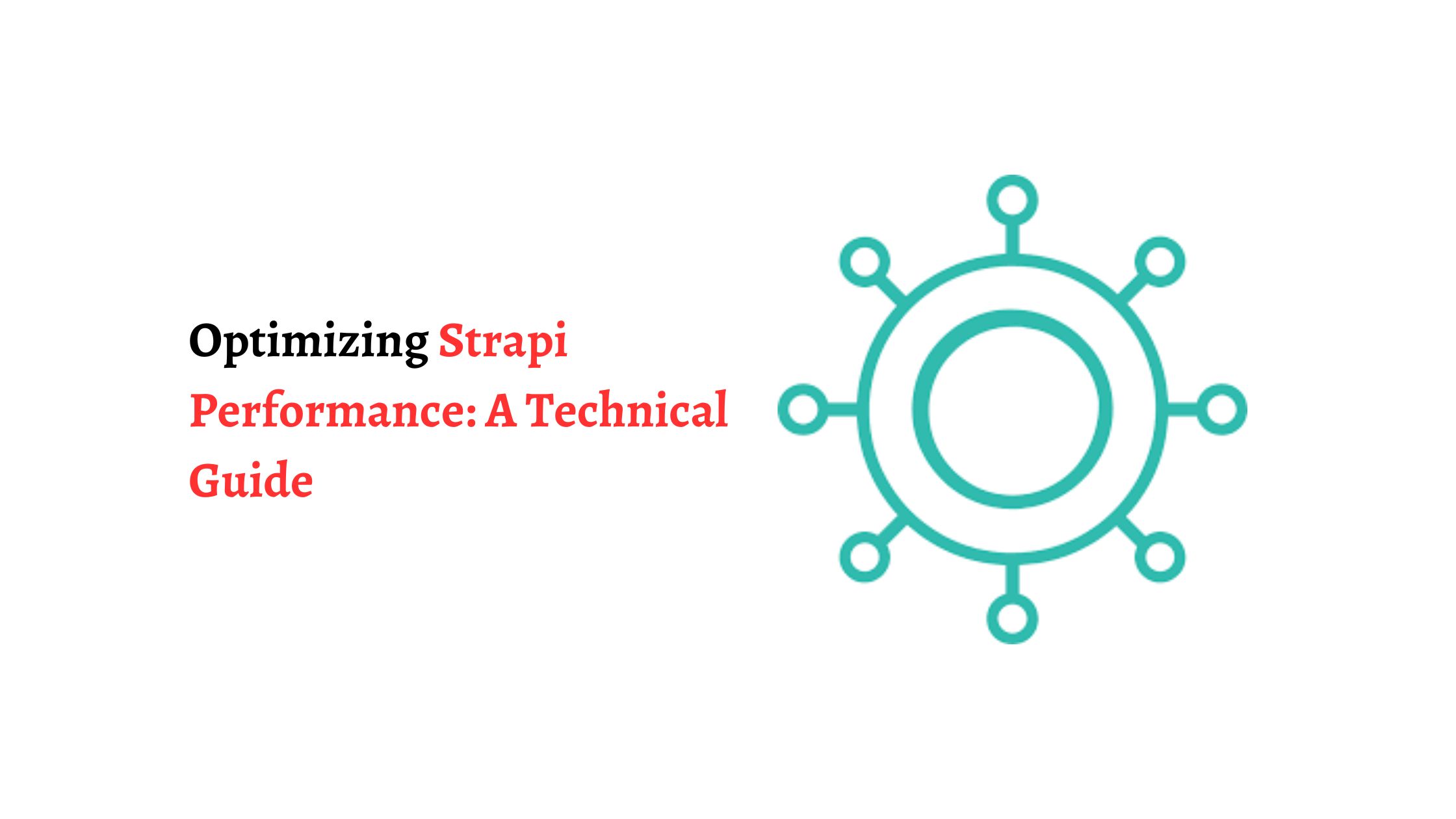As businesses in today’s competitive world embrace headless CMS to enhance their content management efforts, they have realized that Strapi has emerged as a robust solution. A professional Strapi development company utilizes various techniques and stra’’[o[otegies to optimize its performance for complex projects. In this blog below, we will explore these techniques that the Strapi developers can use while facilitating Strapi development.
Key Strategies for Optimizing Strapi Performance

Strapi is a powerful CMS, but the Strapi development company needs to adopt various techniques and strategies to optimize its performance and extend its functionality. Here are some strategies listed below.
1. Database Configuration
Choose the Right Database:
Strapi supports multiple databases, including SQLite, MySQL, PostgreSQL, and MongoDB. The choice of database can significantly impact performance. In general, for larger projects, it’s recommended to use PostgreSQL or MongoDB as they are better suited for handling complex data relationships and high loads. Make sure your chosen database is properly installed and configured.
Indexes and Relationships:
When defining content types in Strapi, consider the relationships between your models. Properly configuring indexes can improve query performance significantly. Ensure you index fields that you frequently query and those involved in relationships.
2. Caching
Query Caching:
Implement caching mechanisms for frequently executed queries to reduce database load. Utilize caching plugins like Redis to store the results of frequently accessed queries. Doing this lets you deliver content quickly without repeatedly querying the database.
Response Caching:
Leverage HTTP caching mechanisms to cache API responses for clients. This reduces the load on your server, speeds up page loads, and enhances the user experience. Tools like Varnish or CDNs (Content Delivery Networks) can help implement response caching effectively.
3. Content Modeling
Avoid Deep Nesting:
Avoid deep nesting of components or fields within your content types when designing your content models. Deeply nested structures can lead to complex queries and slower response times. Instead, aim for a flatter content model structure.
Selective Fields:
In your API requests, utilize the fields parameter to retrieve only the necessary data. You can significantly reduce the response size and enhance performance by fetching specific fields instead of entire content entries.
4. Code-Level Optimization
Plugins and Middlewares:
Strapi supports the integration of custom plugins and third-party tools. The Strapi development company will leverage these plugins and tools to optimize your application’s functionality. This allows you to extend Strapi’s capabilities without compromising performance. Ensure that your custom code is well-optimized and follows best practices.

Avoid N+1 Queries:
Pay attention to N+1 query problems, where multiple database queries are executed within a loop. This can lead to performance bottlenecks. Hence, the Strapib experts will utilize the populate feature in Strapi to fetch related data in a single query, reducing N+1 query issues.
5. Environment and Server Configuration
Environment Variables:
Optimize Strapi’s configuration by using environment variables to manage settings for different environments (e.g., development, staging, production). This allows for easy configuration changes without modifying your source code.
Server Scaling:
When your application experiences high traffic, consider horizontal scaling by deploying multiple Strapi instances behind a load balancer. This approach distributes the traffic evenly and ensures high availability.
Reverse Proxy:
Implement a reverse proxy server, such as Nginx or Apache, before your Strapi application. This can handle tasks like SSL termination, load balancing, and serving static assets, enabling Strapi to focus on application logic.
6. Monitoring and Profiling
Profiling Tools:
Use profiling tools and frameworks like New Relic, Datadog, or built-in Node.js profilers to identify performance bottlenecks. Profiling helps you pinpoint specific areas of your code or database queries that require optimization.
Logging:
Enable comprehensive logging in your Strapi application to monitor and troubleshoot issues effectively. Utilize tools like Winston or Log4js to centralize and analyze logs.
7. Content Delivery Optimization
Image Optimization:
Optimize images for specific platforms like web and mobile by compressing and resizing them appropriately. Use tools like ImageMagick or libraries like Sharp to process images efficiently. Serving WebP images to browsers that support the format can also lead to faster load times.

Content Compression:
Implement content compression with gzip or Brotli to reduce the size of your API responses. This minimizes data transfer overhead and accelerates content delivery to clients.
8. Load Testing
Perform load testing on your Strapi application to identify its performance limits. Tools like Apache JMeter, Gatling, or loader.io can help simulate heavy traffic and determine how your application behaves under stress. This allows you to proactively address potential performance issues and minimize them for streamlined content management and delivery.
Conclusion
With an increased use of headless CMS, Strapi has emerged as a powerful technology. It enhances content management and omnichannel delivery. But to ensure it’s utilized to its full potential, Strapi developers must follow the key techniques listed above. Additionally, you can hire a professional company like Successive Digital that offers end-to-end Strapi development services.


































